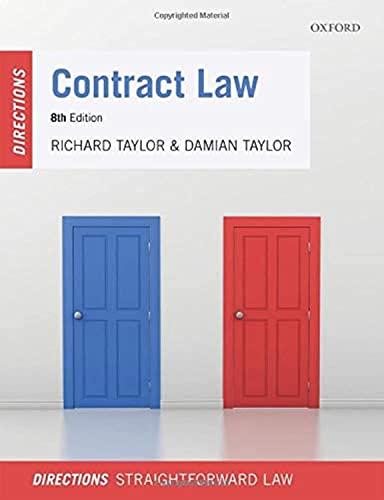Question
1. How does the but for test help t satisfy the requirements of causation? 2. Case: Dixon v. Deacon Morgan McEwan Easson, 1989 CanLII 2786
1. How does the "but for" test help t satisfy the requirements of causation? 2. Case: Dixon v. Deacon Morgan McEwan Easson, 1989 CanLII 2786 (BC SC) Dixon was an investor who chose to invest $1.2 million in National Business Systems when the share price was $12.89 per share. These shares went up jn price somewhat but, before he could sell, the securities commission suspended trading. When trading resumed, the shares sold at about $3 each. Dixon had invested on the strength of financial statements, including one marked "Consolidated Statements of Income and Retained Earnings (Audited)," which had been audited by the defendants. In fact, these statements were based on fraudulent information supplied by the management of National Business Systems to indicate annual profits of $14 million when the company had in fact lost $33 million. There is no question that the accounting firms involved in the audit were negligent for not detecting the inaccuracy. Dixon sued the accounting firm for negligence. Nothing on the document indicated who the auditors were, and the statements had been prepared without the auditors' knowing that they would be used by an investor such as Dixon. Q: Did the auditors owe a duty to Dixon to be careful? If the auditors had known that the statements were being prepared to attract investors, would this affect your answer? Is this a just way of treating liability for professionals, or should they only be liable to the client they have contracted with?
Step by Step Solution
There are 3 Steps involved in it
Step: 1

Get Instant Access to Expert-Tailored Solutions
See step-by-step solutions with expert insights and AI powered tools for academic success
Step: 2

Step: 3

Ace Your Homework with AI
Get the answers you need in no time with our AI-driven, step-by-step assistance
Get Started


